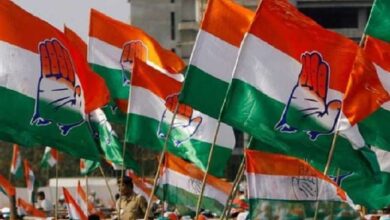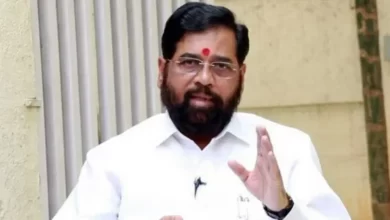free trade agreements

Jayantilal Bhandari
Undoubtedly, at this time Free Trade Agreements (FTAs) have become an important requirement for India to increase global trade. On November 23, Commerce and Industry Minister Piyush Goyal said that under the India-US Trade Policy Forum, where important trade agreements have been signed between the two countries, the possibilities of a limited free trade agreement between the two countries have increased. According to him, apart from India, India is moving ahead on the path of fast execution of FTAs with many countries of the world – Australia, UK, United Arab Emirates (UAE) and European Community etc.
It is noteworthy that on September 24, Prime Minister’s talks with US President Joe Biden have increased the possibilities of a limited-scope trade agreement between India and America in the scenario of new possibilities of good economic and trade relations of India. In July, 2020, in the virtual talks between India and the US, it was brainstormed to start a limited trade agreement between the two countries and then take forward the possibility of an effective FTA with identifying the items of bilateral trade. .
Now broadly speaking, most of the contentious points of the limited scope free trade agreement between India and the US have been resolved. India has urged the US to reintroduce export benefits to certain domestic products under the Generalized System of Preferences (GSP) and provide greater market access for its products in agriculture, automobiles, auto parts and engineering sectors. The US, on the other hand, wants greater market access, localization of data and cuts in import duties on some information and communication technology (ICT) products from India for its agricultural and manufacturing products, dairy products and medical devices.
It is noteworthy that among the countries with which limited-scope free trade talks are going on, India is likely to benefit more from the FTA with the US. There is no doubt that in the new economic world, both America and India have become each other’s need for bilateral trade and business. America is an important source of investment and technology for India as well as an important trading partner.
India has emerged as an attractive destination for global investment. There is no doubt that the emerging trend of innovation, business reform, improvement in manufacturing and service sector is being highlighted in the Indian market at this time, it is highly beneficial for the industry and business of America. India has acute shortage of domestic financial resources for infrastructure and other development projects.
After a decade, India’s preparations for the signing of a major FTA are relaxing. India had its last trade agreement mainly with Malaysia in 2011. This was followed by the signing of a limited scope FTA with Mauritius on February 22, 2021. Under this agreement, more than three hundred domestic goods from various sectors of India’s agriculture, textiles, electronics and various sectors will be allowed to enter the market in Mauritius at concessional customs duty. Under the agreement, import of six hundred and fifteen types of goods/products from Mauritius will attract less or no duty in India.
Indeed, in recent years, the more confusions have arisen in the world trade negotiations under the World Trade Organization (WTO), the more rapidly the FTAs between different countries have increased. At present, the number of FTAs in force across the world has crossed three hundred. FTAs are agreements in which two or more countries agree to give preference to each other in provisions related to customs duties, regulatory laws, subsidies and quotas, etc., on the import and export of goods and services. These are not binding like free trade agreements, that is, if there is a problem later on a particular trade issue, then the option is open to remove it.
Recently, following the Prime Minister’s effective talks with the various G20 heads of state during the G20 summit on 30 and 31 October, the government has decided to enter into limited scope trade agreements with the European Union, Australia, the UAE and the UK. It seems to be progressing rapidly.
It is noteworthy that the exercise on FTA is going on by India since 2013 with the European Union having economic and political participation of twenty seven countries. The European Union is the second largest destination for Indian exports. But the FTA with the European Union could not be finalized due to differences of opinion on several issues.
The possibilities of FTA between India and EU have increased in the changed global economic environment after May 2021. These are the countries which need a big market like India and these countries are also eager to open their market doors for India’s exclusive products. This will allow access to household goods to a much larger market.
While discussions for a limited range of FTAs with other countries, including Australia, the United Arab Emirates (UAE) and the UK, have been satisfactory, some challenges remain. Now India is ready to make necessary changes in its strategy related to the Free Trade Agreement keeping in mind the business needs of the country and the global trade scenario.
Indeed, a major reason for India’s protracted FTA negotiations with various countries is the high domestic tariffs in some of the most dynamic trading sectors such as manufacturing. The position is that India has been reluctant to present almost all trade as a more preferential duty structure in its FTA agreements. Therefore, the talks on FTA are now being considered at an equivalent level of preferential trade liberalization and regulatory policy reforms in India.
But now while drafting the FTA, it has to be taken into account that how business steps can be taken forward in the midst of tough competition in FTA countries? New generation business issues like data protection rules, e-commerce, intellectual property and environment will have to be taken into account by India’s negotiators in FTAs with developed countries.
Taking all possible guarantees of cooperation and goodwill from the partner country at the time of FTA will facilitate ease of doing business. We have to take care of low cost of products and high quality as the basic requirement to enhance business competitiveness in FTA countries. Properly availing the benefits of FTA would require coordinated and organized work by the Customs officials, concerned specialist professionals and industrialists.
Certainly a change in India’s strategy on FTAs should be welcomed in the backdrop of changed global trade and business due to the Corona transition. Now India will move more rapidly on the path of new limited scope free trade agreements with different countries of the world. It is expected that now the limited scope FTAs with the US, EU, Australia, UAE and UK will be finalized expeditiously and this will lead to new chapters in India’s foreign trade.
The post Free Trade Agreements Ki Dagar appeared first on Jansatta.
,






